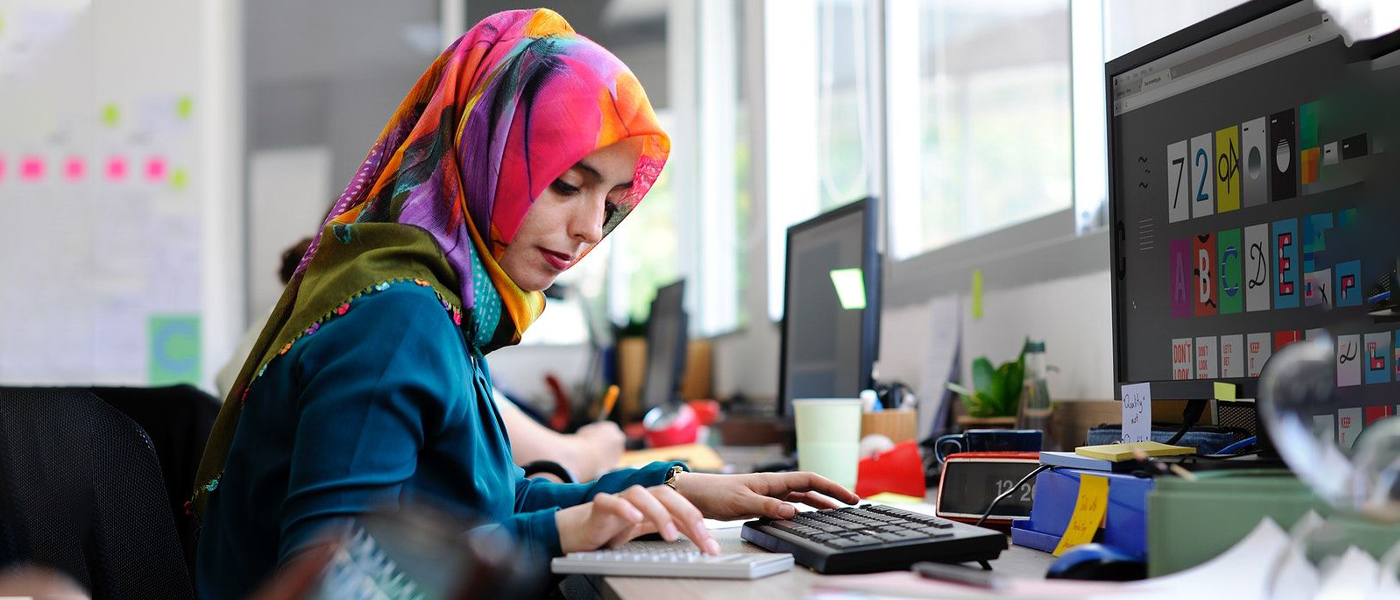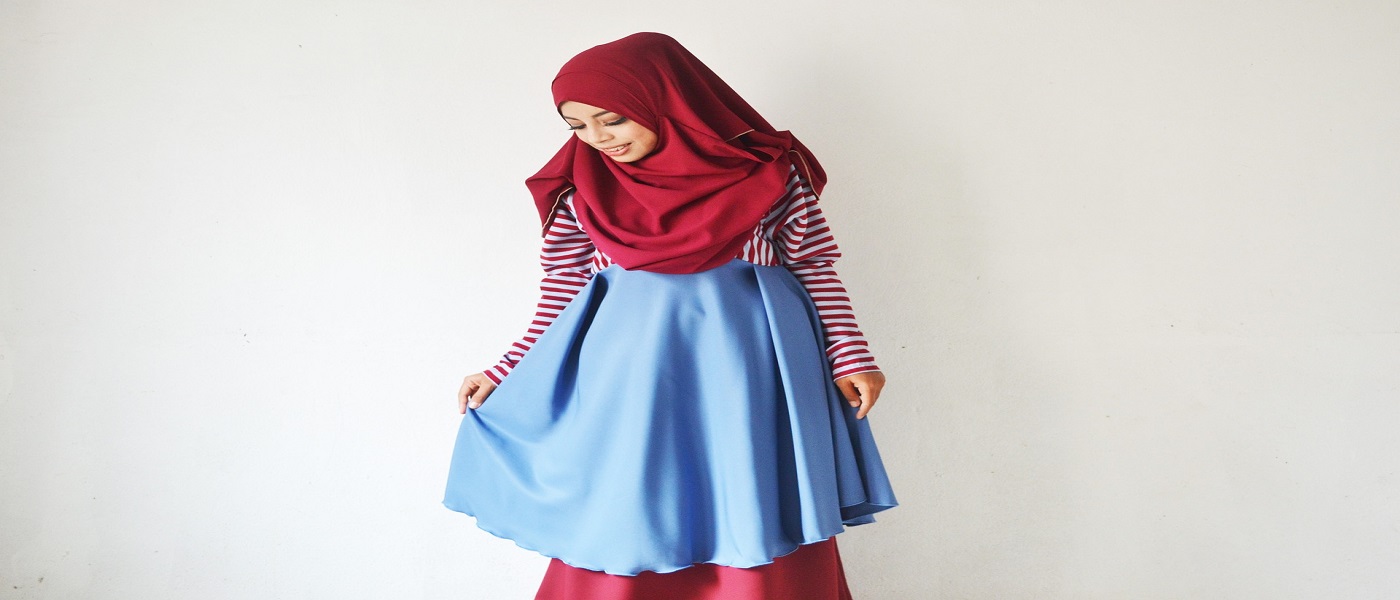

What Careers Can a Hijab Wearing Muslim Woman Choose?
Living as a Muslim woman in any country, be it Canada, the USA, England, or Australia, you might need to find a job. Either you are single or married, graduate or undergraduate, a mother or a wife, having a job might be necessary for you.
However, the moment you decide to go for a job, fear and anxiety rush into your mind; “What if they do not hire me because of my Hijab?”; “Do I have to find somewhere with Muslim personnel?” or even “ What if they disrespect me in front of other colleagues? What shall I do?”
Well, here we are going to discuss some of the issues and matters related to employed or to-be-employed Muslim Women.
1. Does A Muslim Woman Have any Limitations in Choosing a Career?
As a Muslim woman, you are free to take any job you want, be it a designer, a manager, a teacher, etc. but before choosing that job, you need to consider a few points.
You are a Muslim, and you have chosen to be a Muslim
You have faith in whatever you do, and you need to follow the Commands of Allah to be the person He wants. So, never give something greater away for the sake of something lesser. Allah has promised to help us if we believe in Him with all our hearts, and he will not leave us alone.
Have faith in Allah and confidence in yourself. Be who you are: A Muslim Woman!
“Indeed, those who have said, "Our Lord is Allah " and then remained on a right course - the angels will descend upon them, [saying], "Do not fear and do not grieve but receive good tidings of Paradise, which you were promised.” Quran (41:30)
Your Family Comes First
You may choose to work for many reasons, be it financial problems or your interest in a particular career or simply to express yourself somehow to the world. Whatever the reason, you shouldn’t hurt yourself with the job you choose to take, either mentally or physically. You might be even hurting your family (your kids and your husband) or even your parents. The first priority is family, and will always be. So, try to choose a job that does not harm you nor your family. Imam Sajjad (AS) states that each of our organs has a right. For instance, it’s your ear’s right to hear what is good for you in this world and the afterlife and it’s your eyes’ right to see good things and be closed from anything that Allah has wanted us not to see ( scenes of torture, eroticism, slaughter, intercourse, etc.,) [1]. As your body has a right, so does your family. Remember to preserve theirs before choosing any careers.
Imagine you have chosen to be a volleyball coach. You have already done surgery on your knee, and your doctor has told you to take good care of it. Both logic and Islam say that being a coach hurts your knee, and that can’t be a suitable job for you.
Be Cautious About Your Work Relationships with Men
Men and women work together in most workplaces, and that is a fact. There Is a thing that each Muslim woman needs to keep in mind, and that is to be cautious of those relationships and does not let them take the form of irregular man-woman interactions. They need to be neither cold and disrespectful nor arouse emotional or sexual attractions [2]. Allah tells us how to control that:
“Tell the faithful men to cast down their looks and to guard their private parts. That is more decent for them. Allah is indeed well aware of what they do. And tell the faithful women to cast down their looks and to guard their private parts, and not to display their charms, beyond what is [acceptably] visible, and let them draw their scarfs over their bosoms …” Quran (24: 30-31).
“O wives of the Prophet, you are not like anyone among women. If you fear Allah, then do not be soft in speech [to men], lest he in whose heart is disease should covet, but speak with appropriate speech.” Quran (33:32)
2. Can I Take off My Hijab at Work?
As far as we all know, we are only allowed to take off our hijab in front of other women or men who are among the Mahram men of our family. So, you may be allowed to take off your hijab only if you are working with other women or Mahram men of your family. Some may want to make others gradually accept their chosen faith. But, the fact is that you are a Muslim, and you need others to welcome you, respect, and value your talents and hard efforts. So, let others see who you are and the reality of your Faith. That would bring you more of a trust and confidence.
Careers and professions play an essential role in our everyday lives, and at times, they are even hard to live without. At the same time, women are active members of each achieving society. Islam neither forbids them from social activities nor limits them to stay at home and do daily chores. It just asks them to be careful and watchful about their own health, safety, and femininity and also beware of what happens in their interactions and communications.
References:
- Peiravi, Ali (1992) the Treatise on Rights by Imam Sajjad (AS)
- Nikzad, Abbas (2005) Practical Women Studies, Vol 25
Share This Article

Hijab in the Abrahamic Religions
The term Hijab literally means a cover, curtain, or screen [1], and is generally associated with the Islamic rule regarding women covering certain parts of their body [i]. Considering this matter, one might face many questions and misunderstandings. Perhaps some of the fundamental and mostly asked questions are: “Is the concept of Hijab and the law of covering certain parts of the body for women limited to Islam?” and “Did such a concept make sense in the Abrahamic religions which existed before Islam?” One way of gaining a better understanding and a broader insight into this issue is through a detailed and accurate historical investigation of the characteristics and the treatment of Hijab in the Abrahamic religions of Judaism and Christianity.
Hijab in the Abrahamic Religions
1.Hijab & Judaism:
It seems that covering certain parts of the body and maintaining a modest demeanor for women in society was of much importance in Judaism. The manner of Shuaib [ii]’s daughters toward Moses, explicitly mentioned in the Holy Quran, can best illustrate the necessity of acting modestly in the society for women:
“When he arrived at the well of Midian, he found there a throng of people watering [their flocks], and he found, besides them, two women holding back [their flock]. He said, ‘What is your business?’ They said, ‘We do not water [our flock] until the shepherds have driven out [their flocks], and our father is an aged man.’ So he watered [their flock] for them. Then he withdrew toward the shade and said, ‘My Lord! I am indeed in need of any good You may send down to me!’ Then one of the two women approached him, walking bashfully [modestly]. She said, ‘Indeed my father invites you to pay you the wages for watering [our flock] for us.’ So when he came to him and recounted the story to him, he said, ‘Do not be afraid. You have been delivered from the wrongdoing lot’” (28:23-25).
Based on this account, it can be argued that at the time of Prophet Moses, women’s modest and demure behavior was regarded as praiseworthy and respectful and a sign of their high status and distinguished personality in the society.
Moreover, there are some verses in Torah that name different kinds of clothing -Burqa or a veil covering one’s face- used by women as a kind of Hijab. In the book of Genesis, for instance, as addressed to Judah’s bride we read:
“And she put off from her the garments of her widowhood, and covered herself with her veil, and wrapped herself, and sat in the entrance of Enaim, which is by the way to Timnah; for she saw that Shelah was grown up, and she was not given unto him to wife. When Judah saw her, he thought her to be a harlot; for she had covered her face” [38:14-15].
As Will Durant [iii] puts, a common tradition for women among Jewish tribes was to attend public places with head-covers. This practice had to be followed as a rule and transgression from it would bring some consequences including divorcing the woman without paying her marriage portion [2].
Appearing bare-headed and without any cover for women, in some societies -e.g., the Far East and Mesopotamia- was considered as the symbol of inferiority and the characteristics of lower social standings. Moreover, women regarded the act of uncovering their hair in front of public eyes as a huge humiliation, to the extent that this act was performed in punishing the women who were guilty of a crime. Also, according to some Rabbis, women’s attendance without a kind of Hijab in the religious ceremonies and rituals was strictly forbidden [3].
2. Hijab & Christianity:
From the chosen and highly respected women named in Islam, the Holy Quran directly mentions Blessed Mary, mother of Jesus Christ, the messenger of Christianity, as the embodiment of a chaste, modest, pure woman and a true believer in God. Her status is so high in Islam that one of the chapters of the Holy Quran has been given her name.
In addition, in many of the Christian paintings and portraits, the figure of the Virgin Mary has been depicted with a complete head-cover as well as a long loose dress. So, Christian women who follow their prophet’s mother and the laws of Christianity, have attempted to observe modesty and chastity in their social interactions. As Jurji Zaydan [iv] states: “If by Hijab we mean covering body, this practice was common before Islam and even before the emergence of Christianity and its effects still remain in the European societies.”
Furthermore, there is some textual evidence in the Bible that refers to this tradition and its necessity among Christian communities. In the Old Testament, the book of Genesis, it has been said:
“For she had said unto the servant, What man is this that walketh in the field to meet us? And the servant had said, It is my master: therefore she took a veil, and covered herself” [24:65].
And the need for head-covering in religious ceremonies has been emphasized by Saint Paul in the New Testament:
“Every man praying or prophesying with anything down over his head dishonors his head, but every woman praying or prophesying with her head uncovered dishonors her head—it is the same as if her head were shaven. For if a woman will not be covered, then let her be shorn! But since it is disgraceful for a woman to be shorn or shaven, let her be covered. … Judge for yourselves: is it proper for a woman to pray to God with her head uncovered?” [Corinthians 11:2-16].
The rule of celibacy for Christian priests and nuns -approached slightly different in the three main Christian denominations including Catholicism, Protestantism, and Orthodoxy [v]- though not accepted in Islam, is primarily and originally established to avoid worldly temptations and practicing self-restraint and modesty.
Also, the special kind of dress worn by nuns in churches which covers most parts of their body shows the emphasis of Christianity on the necessity of appearing with appropriate and non-provocative clothing in society.
Moreover, considering the paintings that portray western aristocratic females, as well as the literature of the pre-twentieth-century, it can be realized that wearing a suitable and modest dress by women represented their higher social standing and evoked the respect of other members of the society.
Up until the end of the nineteenth century, wearing hats and using long and decent clothing was common for women. However, with the passage of time, this tradition went through changes, and gradually the religious beliefs, and divine teachings of Jesus Christ faded away from their lives [5].
Nevertheless, in some eastern catholic and orthodox churches such as the Russian Orthodox Church, women are required to wear a head-cover when entering the church for attending religious ceremonies [6]. In addition, in Continental Europe and North America, most women of the Christian denominations including Anglican [7], Baptist [8], Methodist [9], and Roman Catholic [10] use a kind of head-cover when participating the religious rituals inside the church.
Conclusion
With a brief look at what has been said so far, it becomes evident that the religion of Islam was not the inventor of the Hijab, rather this tradition had existed and practiced in different forms among the followers of the two Abrahamic religions of Judaism and Christianity.
The parallels that one can find in the characteristics of the Hijab and the philosophy behind it in these three religions reveal the fact that in a way Islam has only modified and continued this tradition. According to Islam, also, the practice of wearing a Hijab is essentially aimed to preserve the human value and dignity of women when interacting with men outside the family circle and to provide a secure environment where everyone, man or woman, can perform their tasks effectively and morally.
Moreover, the kind of Hijab that Islam defines for women is covering all parts of their body except their faces and hands [from wrists to fingers] through wearing a modest dress, similarly, as we have seen in the previous paragraphs, Jewish and Christian women covered their head and were encouraged to wear non-provocative clothes. So, Islam, the last and most perfect religion, revised the rules of the preceding religions and completed the teachings of the previous prophets by providing thorough and applicable instructions.
Notes:
[i] Originally, the Quranic term used for this rule is “satr or satir—الستر، الساتر”
[ii] An ancient Midianite Prophet, sometimes identified with the Biblical Jethro. His name is mentioned in the Quran a total of 11 times.
[iii] William James Durant (November 5, 1885 – November 7, 1981) was an American writer, historian, and philosopher. He is best known for The Story of Civilization.
[iv] Jurji Zaydan was a prolific Lebanese novelist, journalist, editor, and teacher most noted for his creation of the magazine al-Hilal, which he used to serialize his 23 historical novels.
[v] In Orthodox Christianity “Priests and deacons may marry before ordination but not after. Bishops, on the other hand, must be celibate. While “the majority of Protestants do not require celibacy as a condition of election to the clergy.” Catholics, on the other hand, believe that “Priests and Bishops must be celibate, with the exception of Eastern Rite Catholics and Anglican married clergy who subsequently convert to Catholicism. These groups are allowed to have married priests” [4].
References:
- Rizvi, Sayyid Muhammad. n.d. Hijab, The Muslim Women's Dress, Islamic or Cultural? Ja‘fari Islamic Centre (Tabligh Committee) Canada.
- Durant, Will. n.d. The History of Civilization. Vol. XII.
- hijab
- HIjab in Abrahamic religion
- for more information about the changes in British women’s costume through ages visit: link
- Gdaniec, Cordula Cultural Diversity in Russian Cities: The Urban Landscape in the Post-Soviet Era.
- Muir, Edward (18 August 2005). Ritual in Early Modern Europe. Cambridge University Press. p. 31.
- Yearbook of American & Canadian Churches 2012. Abingdon Press. 2012-04-01. p. 131
- Morgan, Sue (2010-06-23). Women, Gender and Religious Cultures in Britain, 1800-1940.
- Henold, Mary J. 2008. Catholic and Feminist: The Surprising History of the American Catholic Feminist
Read More

Can Women in Islam Work as Fashion Models?
Well, one way to answer this question is to consider it by itself and regardless of any side issues. One may thus say that Muslim women –together with the rest of the world– need clothes! women in Islam, too, deserve to wear beautiful and stylish outfits! Muslim women, too, can have a job! And if all that is acceptable, there could be no fault found with designing such clothes or presenting them as a model.
As you know, though, Islam generally gives us the liberty to do all that is sensible, necessary, and harmless but always draws our attention to certain limits and red lines as well. Our answer to such questions, therefore, is usually like; “No problem provided that…”
So, let’s now have a look at those conditions for women in Islam that might concern fashion designing and modeling?
1. Cover End
As you know, Islam has set a certain limit on women’s covering. This certain limit addresses women’s natural charm and attractions for men, and their understandable desire to expose them.
So, the big idea for setting such specific measures may be that women do not make a pledge of a special extent of covering for themselves which they would never break. Since, it will end up in what we can see today, where women’s bare body is so widely used as a tool to win men’s attention and pleasure. That’s why Islam has issued special rulings for women (and of course men’s) covering.
2. Modesty for Women in Islam
The second thing, which is even more repeated and stressed on in Islam, is modesty [1]. But what is modesty all about? Cambridge dictionary defines it [with regards to clothes and behavior] as “a quality, in women, of dressing or behaving in a way that is intended to avoid attracting sexual interest” [i].
Of course, modesty is not exclusively for women in Islam. Men, too, are bid not to dress up or behave in a way that may attract sexual interest. What’s more, the same term is also metaphorically used to imply protecting all parts of the body from trespasses, such as modesty of the eyes, modesty of the tongue, or modesty of the heart. So, in a broad sense, modesty is the quality of protecting oneself against wrong desires. And that’s exactly what we need in fashion modeling.
Now, modesty is somehow different from covering obligations. It means a person (or a woman, as concerns this article) might be well covered following the Islamic principles of covering, but her type of clothes or her manners may still leave room for provoking sexual interest.
Moreover, the realization of modesty can be culturally variable. What is considered as an acceptable level of modesty in a cultural background may not be so in another. But in every culture, I guess, women know pretty well what kind of outfit or behavior could attract sexual attention. And that will do!
To Come to an End…
Finally, I should say that Islam is not opposed to men and women looking neat, good-looking, fashionable, or even attractive. If a woman is especially kind looking, for example, she looks particularly attractive to everybody.
Does it mean that she shouldn’t look like that? No way! What Islam tries to avoid is looking SEXUALLY attractive –in the same way that Islam asks men time after time to take care of their sight and never look at any woman –other than one’s spouse- sexually. Because Islam wants all sexual pleasure and satisfaction to be concentrated within wedlock and intended for its strength and persistence, rather than its disruption!
So, yes, fashion designing and modeling are acceptable for women in Islam [ii]. And yes, Muslim fashion designers or models are not the same as others who usually intend to be seductive in their manners and their type and extent of covering. Muslim designers and models are required to cover their body (except for the face, hands, and feet) and to look modest. In Muslim countries, therefore, fashion shows are held in segregated places when the kinds of clothes being presented do not go along with Islamic rulings on covering and modesty in public.
Notes:
[i] dictionary.cambridge.org
[ii] You can read more about whether Muslim women can have a job here.
References:
- Al-kafi, vol. 3, p. 714 , Knaz al-‘Ummal, vol. 3, p. 126
Read More

